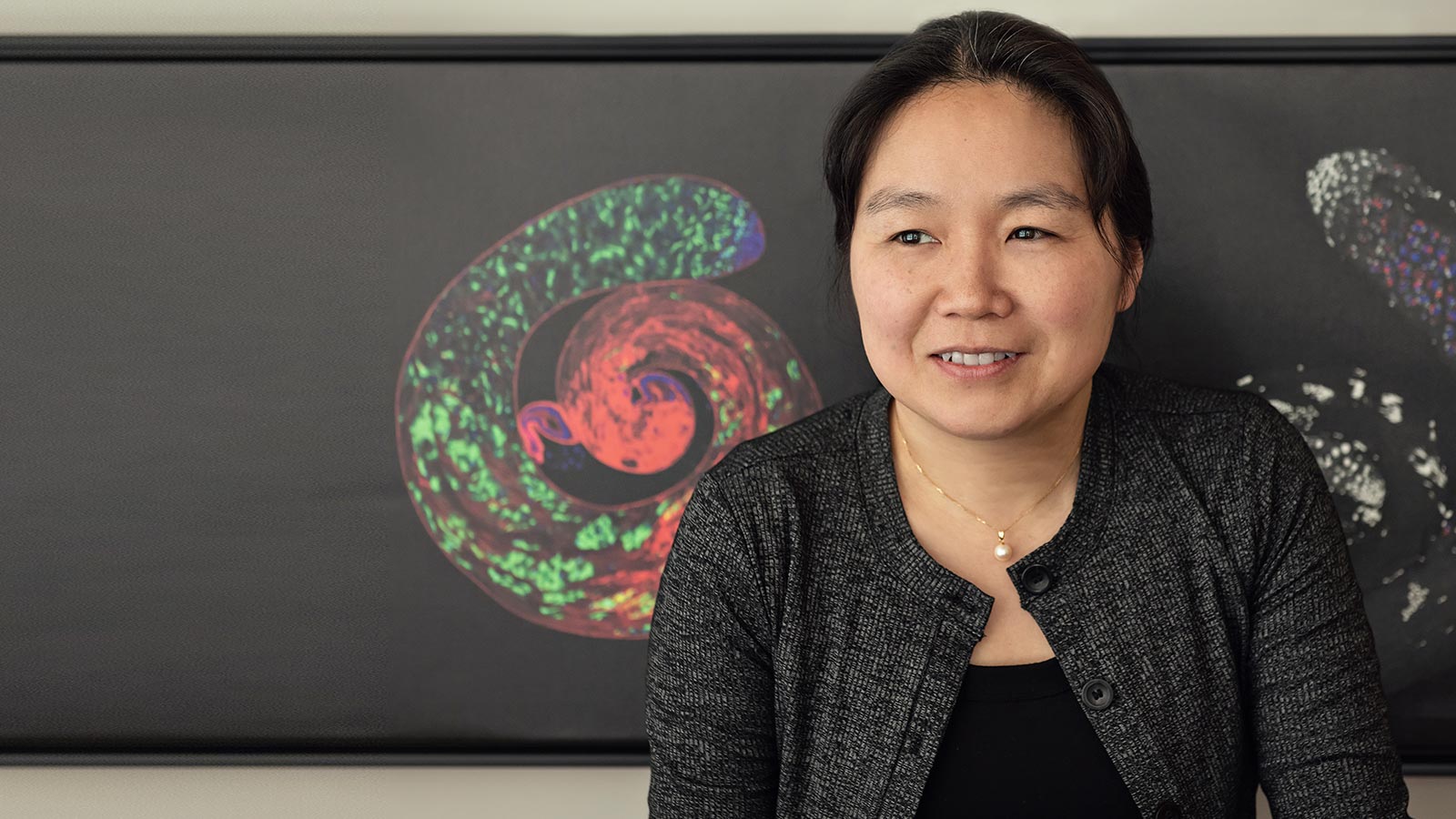Education
- PhD, 1999, Kyoto University
- BS, Biology, 1994, Kyoto University
Research Summary
Two remarkable feats of multicellular organisms are generation of many distinct cell types via asymmetric cell division and transmission of the germline genome to the next generation, essentially in eternity. Studying these processes using the Drosophila male germline as a model system has led us to venture into new areas of study, such as functions of satellite DNA, a 'genomic junk,' and how they might be involved in speciation.Awards
- National Academy of Sciences, 2025
- Tsuneko and Reiji Okazaki Award, 2016
- Howard Hughes Medical Institute, Investigator, 2014
- MacArthur Fellow, 2011
- Women in Cell Biology Early Career Award, American Society for Cell Biology, 2009
- Searle Scholar, 2008
Key Publications
- Satellite DNA-containing gigantic introns in a unique gene expression program during Drosophila spermatogenesis. Fingerhut, JM, Moran, JV, Yamashita, YM. 2019. PLoS Genet 15, e1008028.
doi: 10.1371/journal.pgen.1008028PMID:31071079 - A conserved function for pericentromeric satellite DNA. Jagannathan, M, Cummings, R, Yamashita, YM. 2018. Elife 7, .
doi: 10.7554/eLife.34122PMID:29578410 - Transgenerational dynamics of rDNA copy number in Drosophila male germline stem cells. Lu, KL, Nelson, JO, Watase, GJ, Warsinger-Pepe, N, Yamashita, YM. 2018. Elife 7, .
doi: 10.7554/eLife.32421PMID:29436367 - Nanotubes mediate niche-stem-cell signalling in the Drosophila testis. Inaba, M, Buszczak, M, Yamashita, YM. 2015. Nature 523, 329-32.
doi: 10.1038/nature14602PMID:26131929 - Chromosome-specific nonrandom sister chromatid segregation during stem-cell division. Yadlapalli, S, Yamashita, YM. 2013. Nature 498, 251-4.
doi: 10.1038/nature12106PMID:23644460
Recent Publications
- Distinct satellite DNA composition between core and germline restricted chromosomes in Bradysia (Sciara) coprophila. Kerrebrock, A, Flynn, JM, Baird, RB, Hodson, CN, Ross, L, Yamashita, YM. 2025. G3 (Bethesda) 15, .
doi: 10.1093/g3journal/jkaf155PMID:40609037 - Intrinsically weak sex chromosome drive through sequential asymmetric meiosis. Meng, X, Yamashita, YM. 2025. Sci Adv 11, eadv7089.
doi: 10.1126/sciadv.adv7089PMID:40333966 - Rewinding the clock: mechanisms of dedifferentiation. Raz, AA, Yamashita, YM. 2025. Curr Opin Genet Dev 93, 102353.
doi: 10.1016/j.gde.2025.102353PMID:40311173 - Insulin signaling regulates R2 retrotransposon expression to orchestrate transgenerational rDNA copy number maintenance. Nelson, JO, Slicko, A, Raz, AA, Yamashita, YM. 2025. Nat Commun 16, 399.
doi: 10.1038/s41467-024-55725-6PMID:39755735 - Co-transcriptional splicing facilitates transcription of gigantic genes. Fingerhut, JM, Lannes, R, Whitfield, TW, Thiru, P, Yamashita, YM. 2024. PLoS Genet 20, e1011241.
doi: 10.1371/journal.pgen.1011241PMID:38870220 - RNA polymerase II-mediated rDNA transcription mediates rDNA copy number expansion in Drosophila. Watase, GJ, Yamashita, YM. 2024. PLoS Genet 20, e1011136.
doi: 10.1371/journal.pgen.1011136PMID:38758955 - Running the gauntlet: challenges to genome integrity in spermiogenesis. Kitaoka, M, Yamashita, YM. 2024. Nucleus 15, 2339220.
doi: 10.1080/19491034.2024.2339220PMID:38594652 - Insulin signaling regulates R2 retrotransposon expression to orchestrate transgenerational rDNA copy number maintenance. Nelson, JO, Slicko, A, Raz, AA, Yamashita, YM. 2024. bioRxiv , .
doi: 10.1101/2024.02.28.582629PMID:38464041 - rDNA magnification is a unique feature of germline stem cells. Nelson, JO, Kumon, T, Yamashita, YM. 2023. Proc Natl Acad Sci U S A 120, e2314440120.
doi: 10.1073/pnas.2314440120PMID:37967216 - The implications of satellite DNA instability on cellular function and evolution. Flynn, JM, Yamashita, YM. 2024. Semin Cell Dev Biol 156, 152-159.
doi: 10.1016/j.semcdb.2023.10.005PMID:37852904
Multimedia

